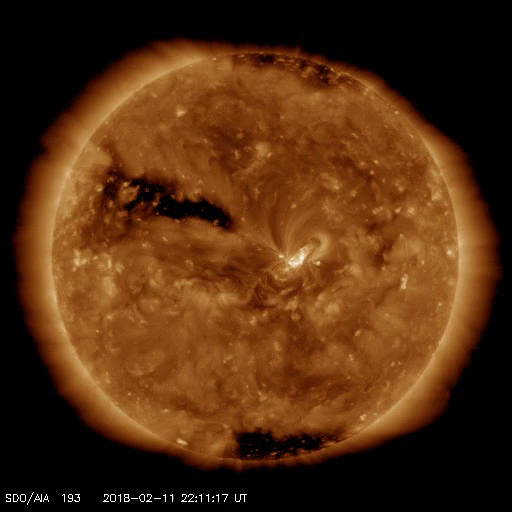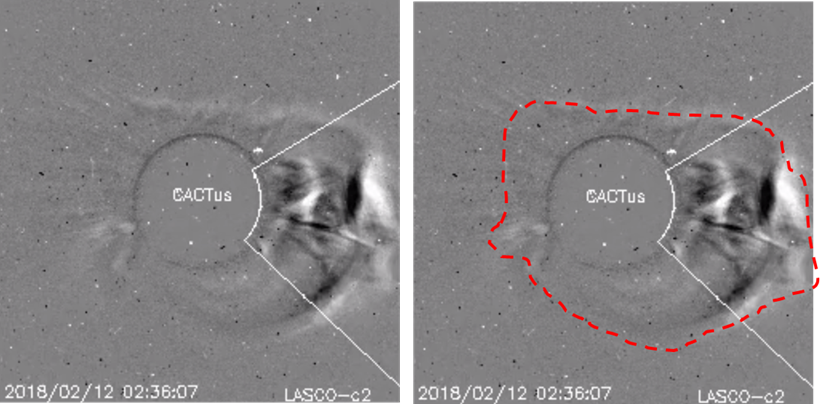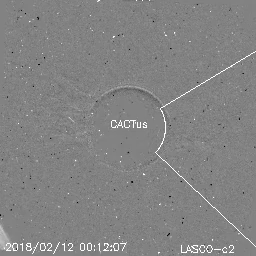Just after midnight on 12 February, NOAA 2699 was the source of a long duration C1.5 flare. The x-ray event started at 00:15UT, peaked at 01:35UT, and ended at 03:21UT, hence lasting for more than 3 hours! Coronal dimming, also known as a transient ("temporary") coronal hole, was observed close to the solar disk's centre. This can be seen in SDO's extreme ultraviolet imagery (AIA 193) underneath around 00UT (before the flare's onset), around 02UT (during the flare), and around 09UT (after the flare). The coronal dimming indicated that the event was very likely associated with a coronal mass ejection which -in view of the source's position- may be en route to Earth.


The associated coronal mass ejection (CME) was first observed in the SOHO/LASCO C2 field of view at 01:25UT (CACTus). It concerned an asymmetric halo CME (see coronagraphic image underneath; the CME is outlined by red dashes) which had a speed slightly in excess of 500 km/s. Most of the space weather forecast centres predict its arrival at Earth sometime between late 14 (18UT) and 15 (24UT) February, with minor to moderate geomagnetic storming possible. This means that aurora will most likely be limited to the Scandinavian countries, Scotland, Alaska, Canada and the Great Lakes. Just imagine sipping hot chocolate together with your loved one in a sledge in a pristine snowy white landscape illuminated by the deep-red hues from the aurora... That would surely classify as a great Valentine's gift!







